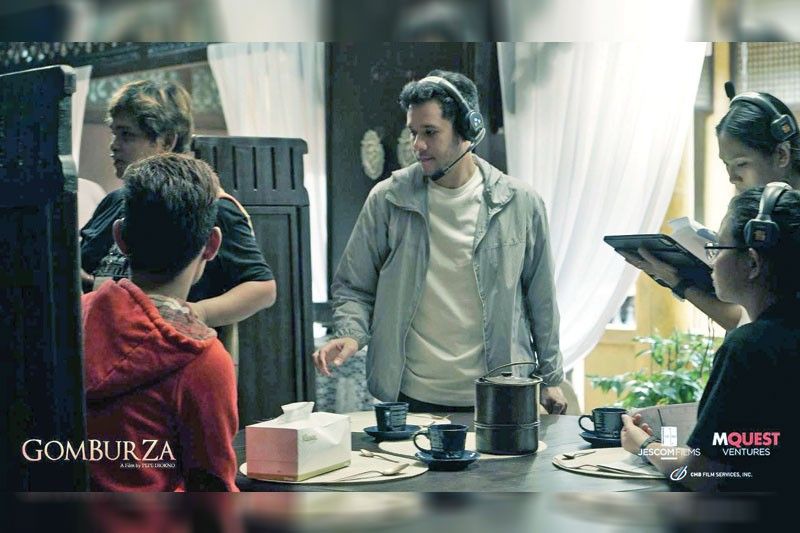Pepe Diokno recalls GomBurZa team’s reaction to viral #MaJoHa

GomBurZa director Pepe Diokno recently looked back on how the production reacted to the viral #MaJoHa issue, which occurred while they were in the midst of filming their upcoming Metro Manila Film Festival (MMFF) entry.
To recall, GomBurZa trended last year when Pinoy Big Brother teens mistakenly referred to the martyred Filipino priests — Mariano Gomes, Jose Burgos and Jacinto Zamora — as “MaJoHa” during the reality show’s history quiz bee, alarming educators and historians.
Direk Pepe recalled the incident during a recent interview, “I think it went viral during the pandemic. When that happened, it appeared in our chats. One of our artists even created a post with ‘MaJoHa’ in it,” with an amused tone.
He continued, “Natuwa kami in a sense that I really think it shows that there’s a need for this film to reintroduce GomBurZa to the younger generation of Filipinos.”
Pepe himself acknowledged that even he discovered new facets of the story while directing GomBurZa from the script of Rody Vera, which tells the story of the three Filipino Catholic priests, Gómes (Dante Rivero), Burgos (Cedrick Juan) and Zamora (Enchong Dee), who were executed by garrote in 1872 by Spanish colonial authorities on charges of subversion. The historical film marks the inaugural collaboration between JESCOM Films and MQuest Ventures.
Direk Pepe shared, “When I first started working on this film, I realized that there were many things I didn’t know about the priests. For example, I had no idea that Burgos had been a teacher to Paciano (Rizal) and that it was Paciano who introduced him to Jose Rizal.”
This connection, he said, led our National Hero to dedicate his novel El Fili to the three priests.
He continued, “I didn’t know, for example, that they were not the same age. Si Gomes pala was in his 70s when he was executed. I didn’t know that Zamora was actually so wrongfully accused, napagkamalan lang talaga siya. And when he was executed, I didn’t know that nawala yung pag-iisip niya.”
For him, these are just some of the untold stories that are essential for Filipino audiences to discover.
“There are so many of these stories that I didn’t know and that I realized that yes, aside from having to introduce the three priests to the young generation, there’s also this very interesting story that we need to tell for all Filipinos to find out,” he said.
The STAR also asked Pepe about how he balanced the film’s commercial viability with its faith-based elements, given that it was produced by the Jesuit Communications and originally intended to celebrate the 500 years of Christianity in the Philippines.
Pepe said, “Yes, it’s produced by Jesuit Communications and the Jesuits at Ateneo. But honestly, napaka-cool talaga ng mga Jesuits. They never asked to turn it into a faith-based film. They understood that it’s primarily a historical film. For instance, we asked if we could portray Zamora as a gambler, despite being a priest, and they approved it because it was historically accurate. They had no issues with priests using strong language when the scene demanded it.
“The film also deals with the Filipinization of the church. So there are scenes with the friars and alam naman natin mga prayle ay naging kontrabida sa ating kasaysayan, so we asked is it okay to explore this because again, it’s historical.
“So, for them, it was all about history and storytelling. As a director, I truly appreciated that, as they wanted to create a film for Filipinos, not a faith-based production.”
Pepe also shared his personal insight from the film, saying the movie is about the origins of the Filipino identity.
“This is a film about the (beginning) of the word ‘Filipino.’ In the past, before GomBurZa, we didn’t call ourselves ‘Filipino,’ there was no concept of ‘nationhood.’ We were fragmented: ‘Tayo’y Tagalog, tayo’y Bisaya, tayo’y Peninsulares, Insulares, Mestizo.’ When the three priests were executed, that was truly the first time that the different sectors of society sort of came together and said wait, we all experienced injustice just like the three priests, therefore lahat tayo ay Filipino.’ Because it was the priests actually who started calling themselves ‘Filipino.’ The term ‘Filipino’ came from the priests,” he noted.
“So that’s the takeaway for me. It’s very interesting to see that the seeds of nationhood and all that were planted in this very big injustice on three priests who were executed for crimes they didn’t commit. And it’s an injustice that we still see over and over today.”
- Latest
- Trending





























